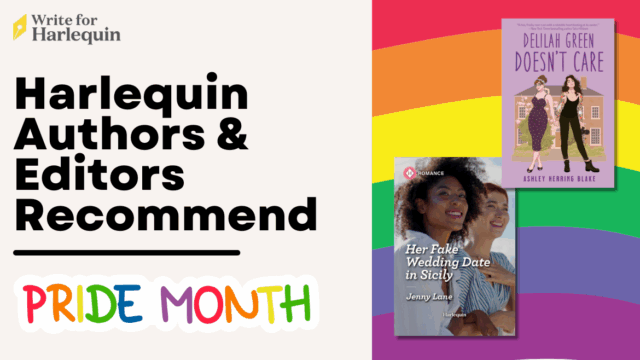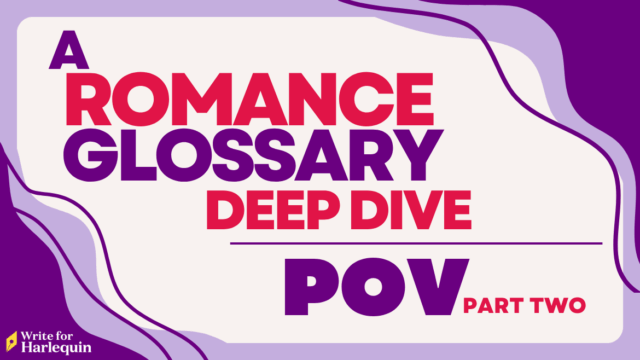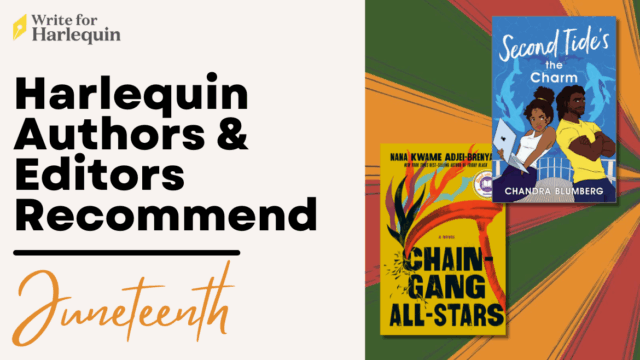Today’s post is a 2016 gem from our Archives! Special Edition Editor Susan Litman walks us through the key elements for keeping a story fresh.

Everyone knows the basic must-haves for a good story. Character. Conflict. Dialogue. Pacing. Plot. An emotional romance. Put together the right way, these elements can engage the reader and give them a satisfying break from the everyday. But how can you separate your book from the pack and really make it stand out? Well, there are a few extra-special ingredients that, if used wisely, can turn a good story into an unforgettable read!
1. A Compelling First Chapter
You know the saying “you never get a second chance to make a first impression?” Well, your first chapter is key to establishing the tone, character and conflict of the story and prepares readers for what is to come. It should promise something only your story can deliver—being deliberately shocking or surprising isn’t enough. Get the reader to connect by engaging them emotionally—let them see at least one character make decisions essential to the story. Offer telling details that give insight and a sense of the stakes—but be careful, this isn’t the place for back story. We need to care about the characters and get curious about what will happen next. And, something must happen in this first chapter to move the story forward. A perfect example is the very first chapter of Suzanne Collins’ YA book The Hunger Games, which effectively introduces the main players and propels the reader into the story at a swift pace, and with great emotional investment in the characters.
2. Chemistry
You’ve created your hero and heroine, and you’ve mapped out their journey, whether it is a Western secret baby story or an edge-of-your-seat romantic suspense. But it is the vivid chemistry between your main players—the sense that these two set off sparks just by being on the same page—that will be key to making the reader fall in love with them, and root for their happily-ever-after. Because no matter what obstacles they face, the reader knows they belong together. The road to romance will be fraught with compelling tension and emotion because of the depth of that irresistible attraction. For example, movies like The Proposal or Say Anything work so well because you can immediately believe that these characters are meant to be, despite their considerable differences (boss/employee in one, opposing cliques/walks of life in the other).

3. A Dash of Difference
Plenty of novels go something like this: hero and heroine meet cute (or dangerous), stick together while external forces and internal issues threaten to keep them apart, until eventually they overcome it all and reach their happy ending. What can you do to shake up the plot—or the characters—and show the reader something new and exciting? Editors in particular love to see an element of unpredictability—perhaps a unique plot twist, or a shocking reveal in the hero or heroine’s back story, a shock-and-awe ending—that becomes a game-changer. Any of these—or a combination—can elevate a story by putting a genuinely new spin on classic archetypes, and this in turn gives the reader a feeling of discovery within the genre—as if they’ve never read anything quite like this book before. Any book by suspense author Harlan Coben is a great example of unpredictable editorial, as his books take multiple twists and turns that leave the reader on the edge of their seat. Closer to home, The Sheik’s Command by Loreth Anne White—the first book in her Sahara Kings miniseries for Harlequin Romantic Suspense—had a unique character twist in the hero: a sheik fighting a coup, assassins—and a genetic condition that was slowly rendering him blind, creating a striking vulnerability in what could have otherwise been a standard alpha hero.
4. Leave ’Em Wanting More!
Just as important as a good opening line is the chapter ending—not only to the first chapter, but every chapter in your book should keep the reader hooked! Think of every chapter ending as a mini-cliffhanger, designed to propel the reader onward. You are perpetually dangling the proverbial carrot in front of the reader—you want to make sure you give them enough information so that they are constantly learning new things about the characters and plot, but keep teasing them to maintain their interest. In doing so, you’ll have a tightly paced story with an ending that lives up to the momentum you’ve developed over the course of the book.
You can follow Special Edition Editor Susan Litman on Twitter @susan_litman. How do you keep your stories fresh? Share with us in the comments below!




